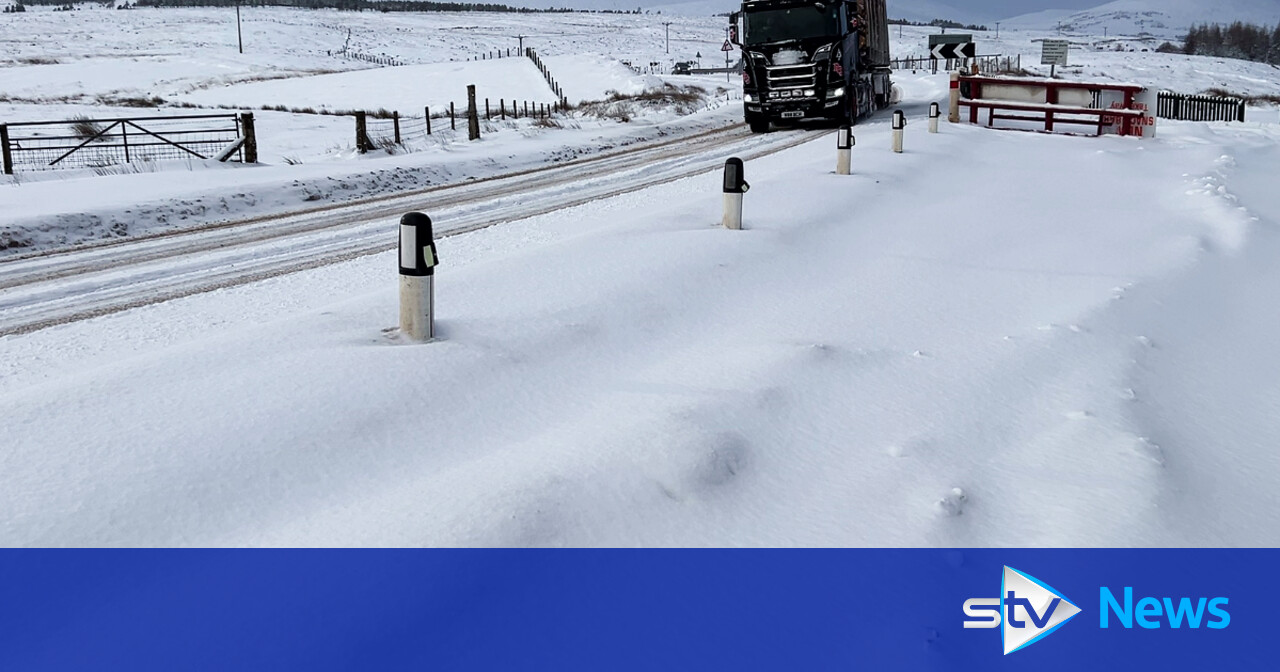World
St Kilda unmasked: the surprisingly savvy – sometimes dark – side to the lost island

What they may not have anticipated, however, were the very savvy and surprisingly demanding islanders that greeted them.
St Kilda Cottage No. 1 and village (Image: Philip Schreiber – National Trust for Scotland)
Far from naïve innocents described by 17th century traveller Martin Martin as “the happiest people in this entire globe”, they were greeted by islanders far more worldly wise than they expected.
St Kildans still clung to their own old ways; a unique community in a challenging landscape, known for abseiling down sheer cliffs to snatch seabirds for food and defying wild winters in isolation from the outside world.
But, as a new book which explores in depth St Kilda and its people, these were no cocooned natives with little grasp of the modern world.
Indeed, they were as sharp as a tack; harassing visitors to give up their ‘tabac’ and ‘smoke’, and who not only understood the benefits of having souvenirs on hand to sell, but mercilessly hustling them into emptying their pockets to buy them.

Their visitors, meanwhile, were a captive audience on a small patch of island with nowhere to go to escape the locals’ demands.
Trapped on Hirta, unable to escape islanders’ efforts to extract their money – they even charged visitors 5 shillings a go to sketch them – and with the pungent stench of dead birds lingering in the air, a holiday on St Kilda certainly left an impression.
Read more by Sandra Dick:
According to Andrew Fleming, a specialist in prehistory and landscape archaeology and the author of a new book which offers fresh insight into St Kilda and its people, the tourists’ 19th century ‘Tripadvisor’ style feedback could be damning.
One was so unimpressed, he thought a subscription should be got up “for the removal of these 72 persons from their lazy, stupid and dirty life in the island of St Kilda; and the introduction in their place of goats and sheep”.
The Victorian tourist’s brief experience of island life feeds into a far bigger picture of St Kilda’s people, their complex characters and subsequent evacuation.
That is often attributed to a ‘lost innocence’ as the world outside encroached on theirs, unable to adapt to modern life and against a background of illnesses and dwindling population.
Instead, Andrew argues St Kildans were actually far more enterprising, worldly wise and politically astute than they’re often given credit for.
While their community – deeply religious and typically seen as simple and untarnished – harboured its own dark secrets, with devious behaviour, underhand plotting, power struggles, fall outs and violence.

“Nobody seriously expected to encounter ‘the happiest people in this entire globe’ as Martin had put it back in 1698,” he writes of the Victorian visitors in his new book, The Gravity of Feathers. “Nevertheless, more romantic visitors were rather hoping for an authentic experience of the legendary lost world of Gaeldom.
“Such people were in for a shock. At best they felt uneasy; at worst, they came away deeply disillusioned.
“As the islanders exploited their all-too-brief opportunities to take care of business, the visitors found them grasping and importunate.”
Islanders turned out to be expert hagglers not averse to a bit of begging, behaviour which had visitors branding them ‘hypocrites’.
Read more by Sandra Dick:
“They had expected to find a poor but honest people, toiling virtuously on their potato patches; instead, they began to suspect that they were dealing with a bunch of imposters, cashing in, literally, on their island’s fame.”
St Kilda, which once had a population of around 200, was evacuated in August 1930, by which time the settlement had dropped to only 36 people.
Their removal was deemed essential: with not enough young people to carry out the essential tasks needed to sustain the community, it was demographically doomed.
Their evacuation would prompt decades of speculation in books and papers as to why it had to happen, often pointing to islanders’ failure to adapt to modernity, claims they were devoid of a spirit of free enterprise and too stubborn or unable to embrace new ideas and ways of working.
But, argues Andrew: “That doesn’t square to me.
“These people were exploiting the tourists; they were very savvy.
“People were brought ashore, and they’d be met by people offering them tweed, birds’ eggs, copper broches, sometimes at exorbitant prices.
“St Kildans manufactured tweed that was top of the range, people paid a premium for it. It was stocked in the top stores in London, Dublin and Paris. It was a posh fabric.

“Much of the mainstream literature is that the evacuation of St Kilda was because they couldn’t cope with modernity. It is seen as a tragedy of Shakesperian proportions, of people with character flaws that came back to bite them.
“I’m saying it was not like that at all.”
St Kilda of the late 19th century was in many ways more advanced than some other Hebridean communities, and even regarded by some as decadent.
Islanders, points out Andrew, had established their thriving tweed industry, were exporting the ancestors of today’s Hebridean sheep and were up to speed on politics and events affecting crofters elsewhere such as rent strikes and land grabs.
“St Kilda people could cope with modernity and they did have spirit of free enterprise, you can see that from way they dealt with tourists and from growing political awareness,” Andrew adds.
“By Edwardian times they had solved most of their problems – admittedly with help from outsiders – and they came to a belle epoch just before the First World War.
“A lot of people thought they were better off than contemporary Hebrideans and sometimes made comparisons with urban proletariat in Glasgow.
“Glasgow was a very unhealthy society compared to St Kilda – Some men went from St Kilda and came back with TB.
“So, St Kildans were better off than some.”
The Hirta community, meanwhile, was not always as close-knit and egalitarian as the romantic vision might suggest.
Andrew’s meticulous research reveals families at times at loggerheads with each other, embroiled in physical fights, domestic abuse and lingering disputes, with often deep divisions between the manse and the islanders.

“The island’s parliament was when the men – but not the minister – would gather. They would talk about their feelings, and they could gang up against him, and discuss his sermons in parliament after Sunday service,” says Andrew.
“One lay preacher, Donald Ferguson, had a very strong personality. He almost competed with the minister and even told him to his face he better buck up his sermons or look for another job.”
That minister, Rev John MacKay, would find himself accused of fraud after appealing for urgent help after a serious gale, only for the ship that arrived with supplies to find islanders less in need than had been suggested.
There were also vendettas to deal with, some driven by the minister’s own housekeeper. She is said to have been a manipulative and scandal-seeking spinster who enjoyed fuelling the kind of gossip that could have the reverend defrocked.
His replacement was an intelligent, progressive minister. But despite introducing improvements to the community, he was also shown the door.
Andrew’s book also uncovers tales of families coming to blows, unmarried mothers and unbaptised babies – not quite the island idyll that’s sometimes portrayed.
A turning point came when the First World War brought a military presence and the community were given tempting insight into an outside world.
It came just as their population, depleted due to emigration and the scourge of neonatal tetanus which claimed the lives of two thirds of the islands’ babies, was on a knife edge.
Read more:
Islanders were further unsettled by trawler operators who decided their crews should no longer spend time visiting St Kilda and delivering post, severing a crucial link with the outside world.
The 1930 evacuation was seen as the community regretfully accepting their fate.
But, according to Andrew, it was the result of behind the scenes plotting by the island’s nurse.
“Nurse Barclay portrays this lovely picture of the islanders gathering in May at her home over tea and scones and her saying ‘we can get you evacuated if you want’.
“But the whole plan had started in February when she drew up a list of people and went from house to house, talking to families on a confidential basis and persuading them it was best to leave.”
Having convinced the younger population to go, the older St Kildans had no choice but to follow.
“She played a cunning political game,” adds Andrew. “They had a meeting in May and signed a petition to go, but her cunning plan had already set it up.”
Desperate appeals for government support including a suggestion for a year-round weaving shed, quarry and a meteorological station were dismissed. St Kilda was later handed into the care of the National Trust for Scotland.

“In a certain sense St Kilda’s history was more triumph than tragedy,” concludes Andrew in his book.
“History is always open to re-interpretation and fresh thinking. There should always be something to discuss, something to argue about.
“I cannot help feeling that when the last 36 islanders sailed away on the Harebell, something rather special died.”
The Gravity of Feathers by Andrew Fleming is published by Birlinn, hardback, on October 3.









